A Common Eider (Somateria mollissima) is pretty much guaranteed on the New England coast in the colder months.
Other ducks don’t feel as expected, still not unexpected.
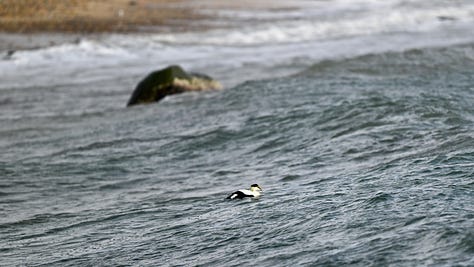
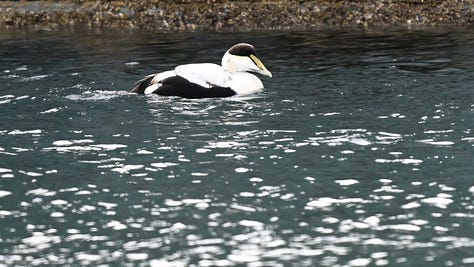
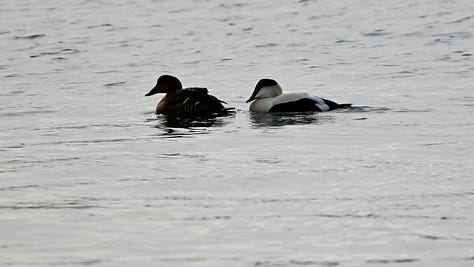
The Scoter Triumvirate. White-winged (Melanitta deglandi), Black (Melanitta deglandi), Surf (Melanitta perspicillata).
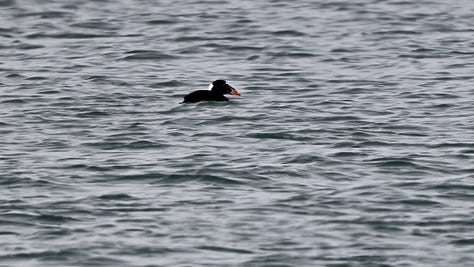

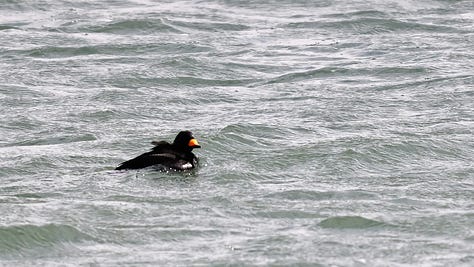
Mergansers—Red-breasted (Mergus serrator), Hooded (Lophodytes cucullatus), and Common (Mergus merganser).
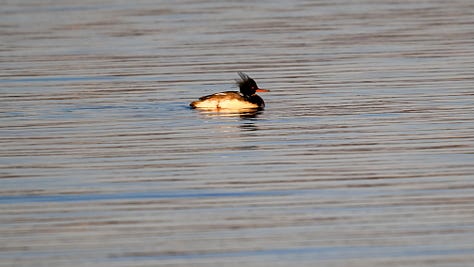


Harlequin (Histrionicus histrionicus) and Long-tailed Ducks (Clangula hyemalis), Common Goldeneye (Bucephala clangula).

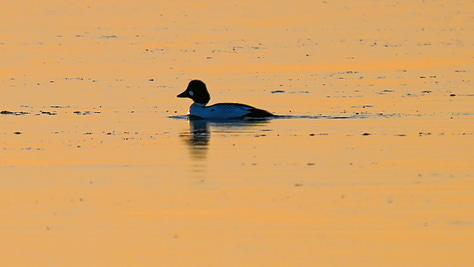
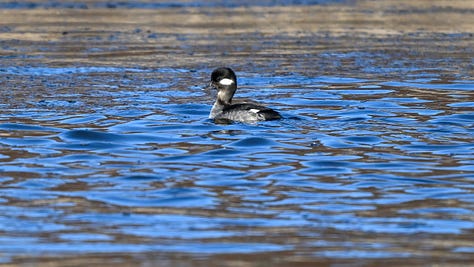
Of course the fan favorite, Bufflehead (Bucephala albeola).
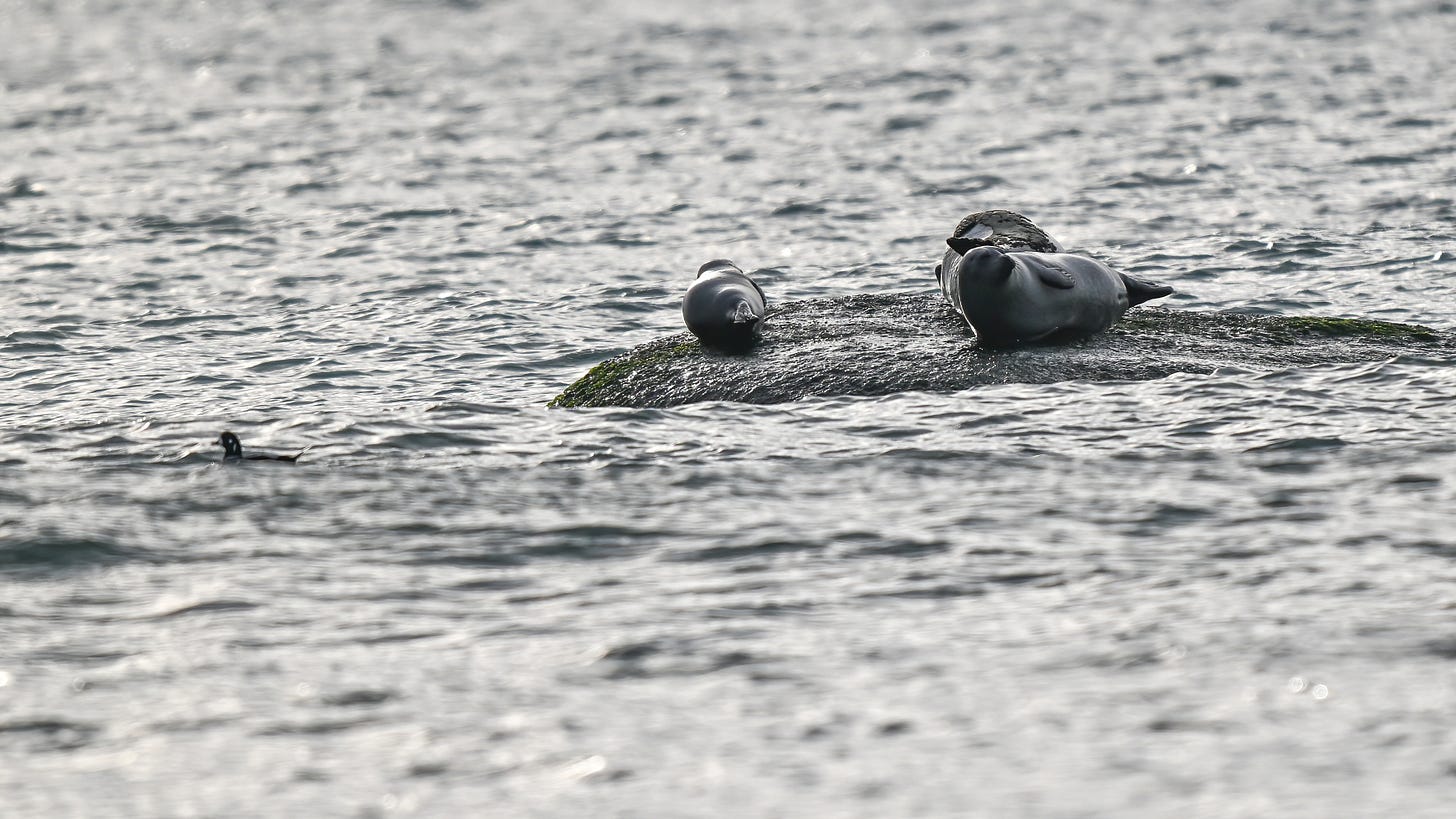
The birds or animals you’re likely to see are special for that reason: you’ll see them.
As you get to know them, they become even more special.
Common Eider have to be tough. Harlequins, which share the same rough habitat, “suffer more broken bones than any other species.”
When I see a bird, I have one or a combination of these reactions:
What evolutionary purpose can such beauty serve?
Wood Duck (Aix sponsa), Harlequin (Histrionicus histrionicus), Scarlet Tanager (Piranga olivacea).
It won’t sit still.
Golden-crowned Kinglet (Regulus satrapa) comes to mind.

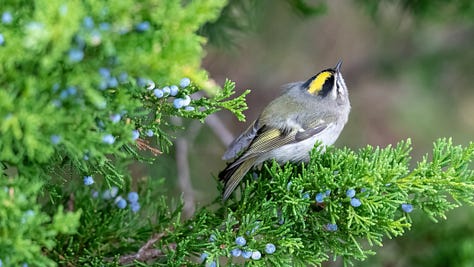

That dauntless bird!
Hunting Osprey (Pandion haliaetus). Gulls dropping shellfish. Common Eider (Somateria mollissima).
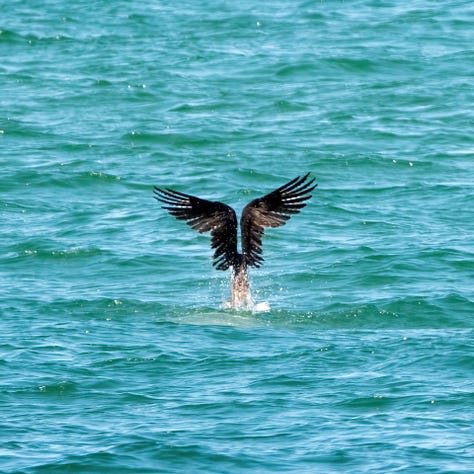
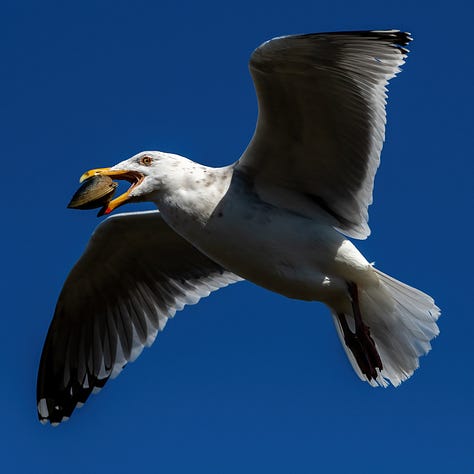

A wave might be about to crash—an eider simply dives, no big deal.
There were many dead ducks onshore. Had they died because of rough habitat?
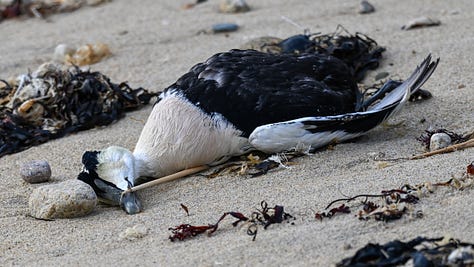



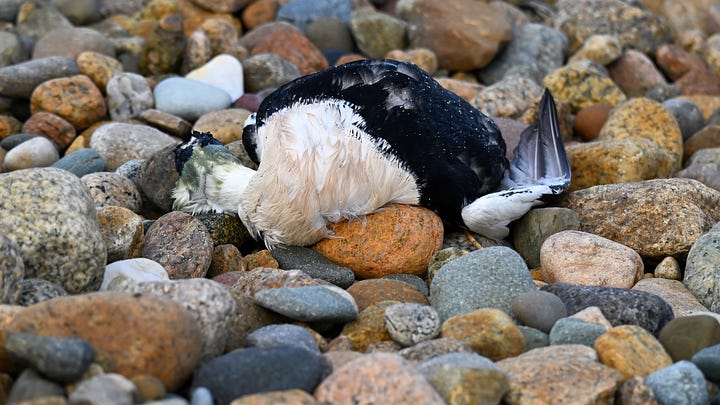
A quick Google search led me to this article from Cape Cod’s Birdwatcher’s General Store. A dead eider might have “thorny-headed-worm” parasites.
There’s also avian flu. This would not be ideal for the gulls that eat dead ducks, the virus is “transmitted to other birds via ingestion or inhalation.”
wrote about bird flu at .Avian influenza A viruses…occur naturally among wild aquatic birds worldwide, [including] waterbirds (waterfowl) such as ducks, geese, swans, gulls, and terns, and shorebirds, such as storks, plovers, and sandpipers. Wild aquatic birds, especially dabbling ducks [eider is a duck, not dabbling—sea ducks aren’t dabbling ducks], are considered reservoirs (hosts) for avian influenza A viruses.
A 2020 Environment International article adds avian flu’s highest isolation rates were
found in waterfowl and birds from the Anatidae family which are more frequent hosts than any other family of birds…common eiders are long-distance migratory bird species that carry AI.
Avian flu aside, a Common Eider is unfazed by what might stop the majority of ducks.
It’s tough to envision a Mallard (Anas platyrhynchos) diving calmly under rough surf or whipping a meal around (Common Eider prefer mussels) atop a rising and falling sea.
I’ve been seeing a lot of eider and kick myself for ever thinking: just Common Eider.
Just? Aside from “that dauntless bird,” they rouse the other reactions.
That bird is breathtaking.
As with all ducks, the females deserve more credit than they get.
A female’s feathers take thoughtful attention to appreciate—“rich reddish brown” and “fine blackish barring."
It won’t sit still.
My aim is a photo of an eider—with its distinct profile—before a crashing wave. They dive at or just before the perfect moment.
They already evoked:
That dauntless bird!
Dauntless and worthy of respect. “Common,” but a Common Eider is a special duck.





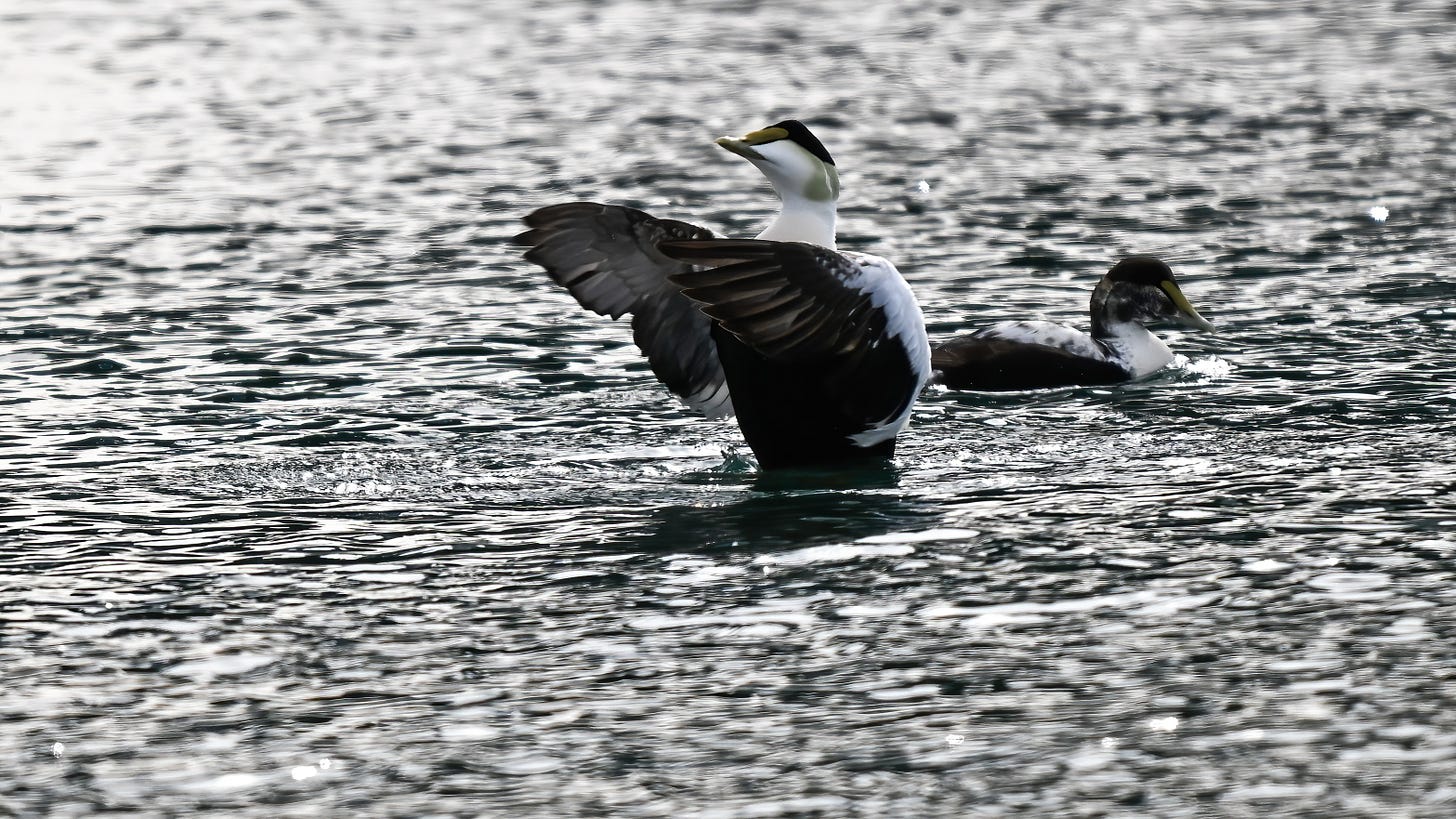
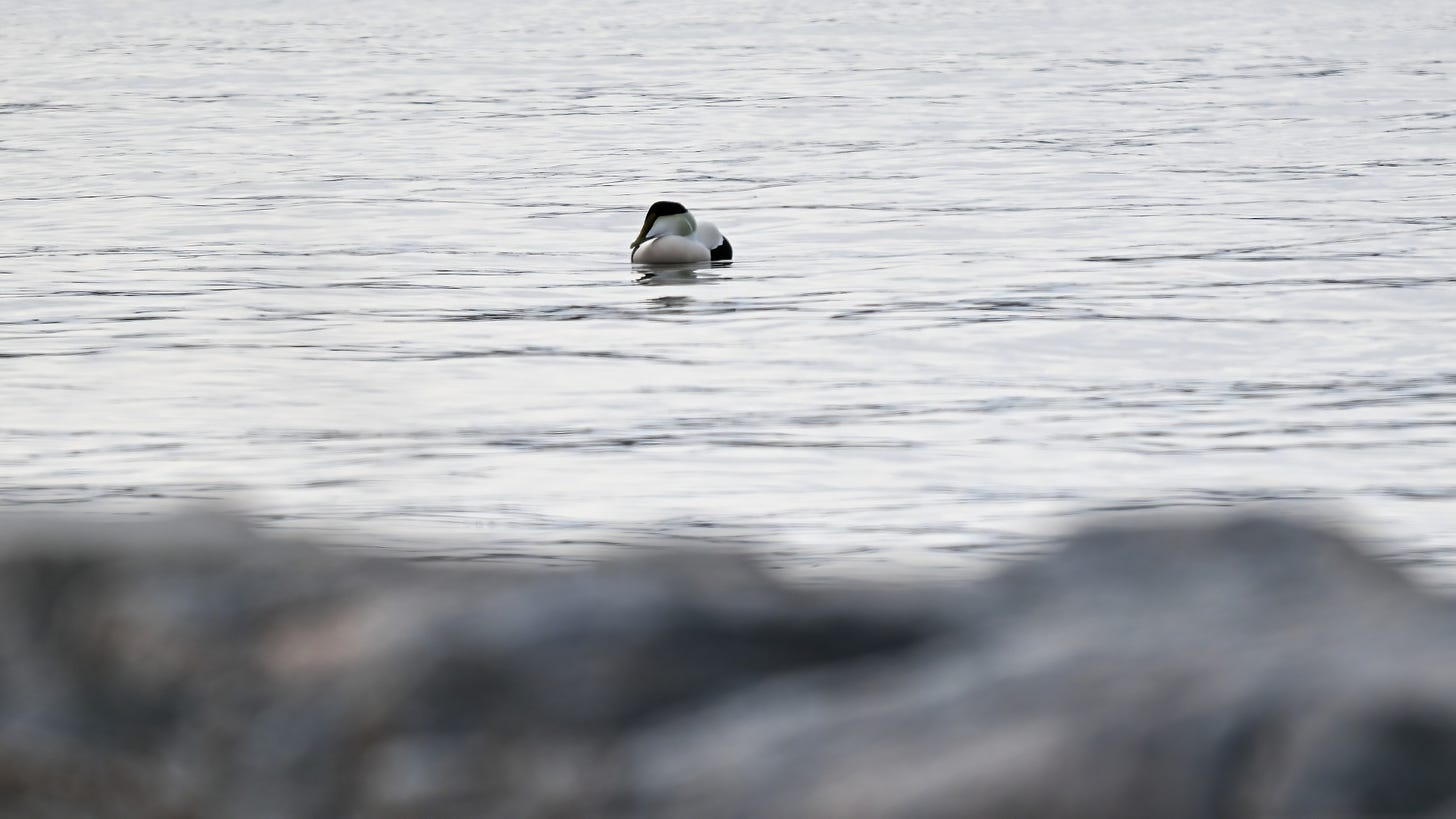

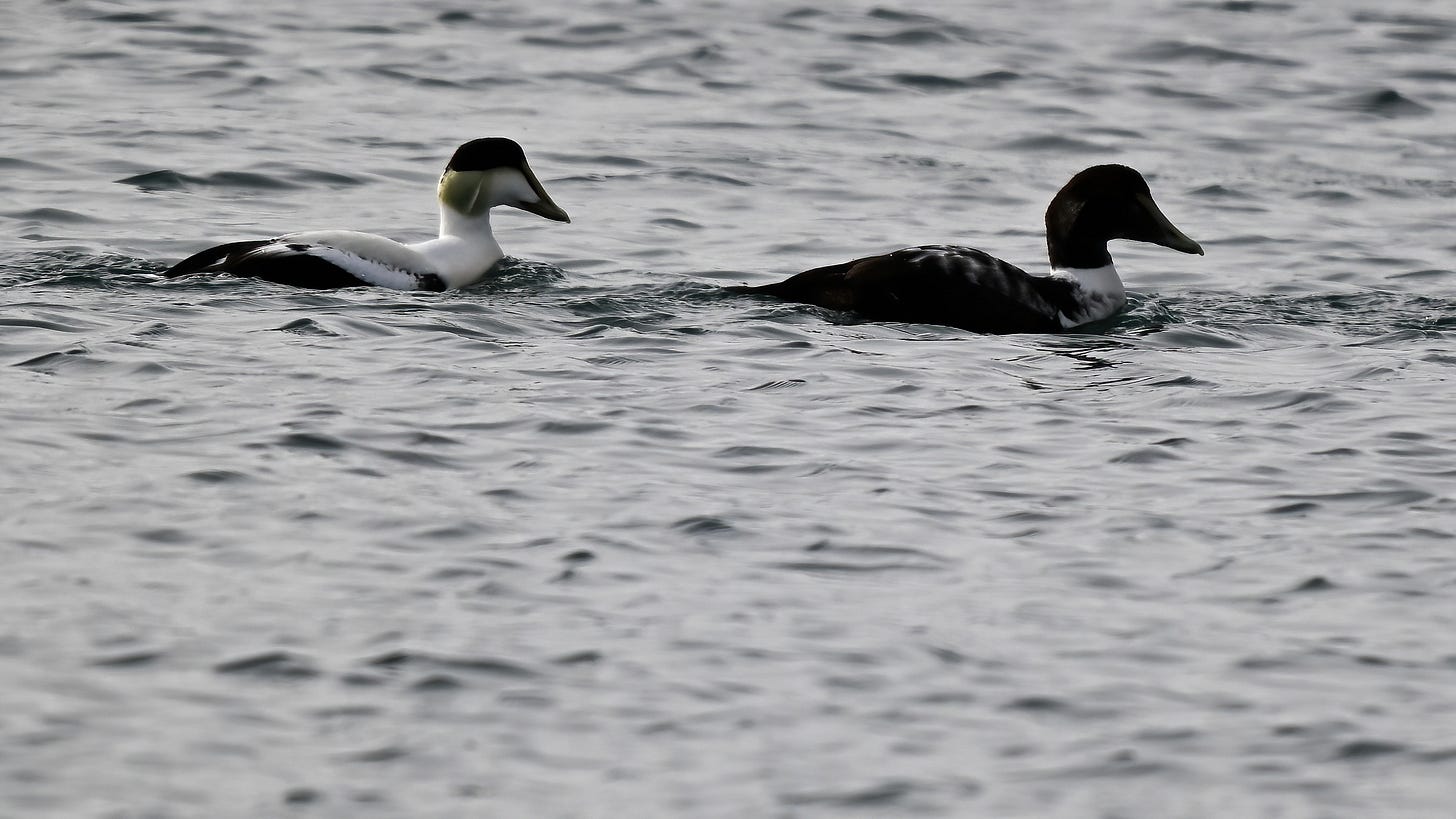
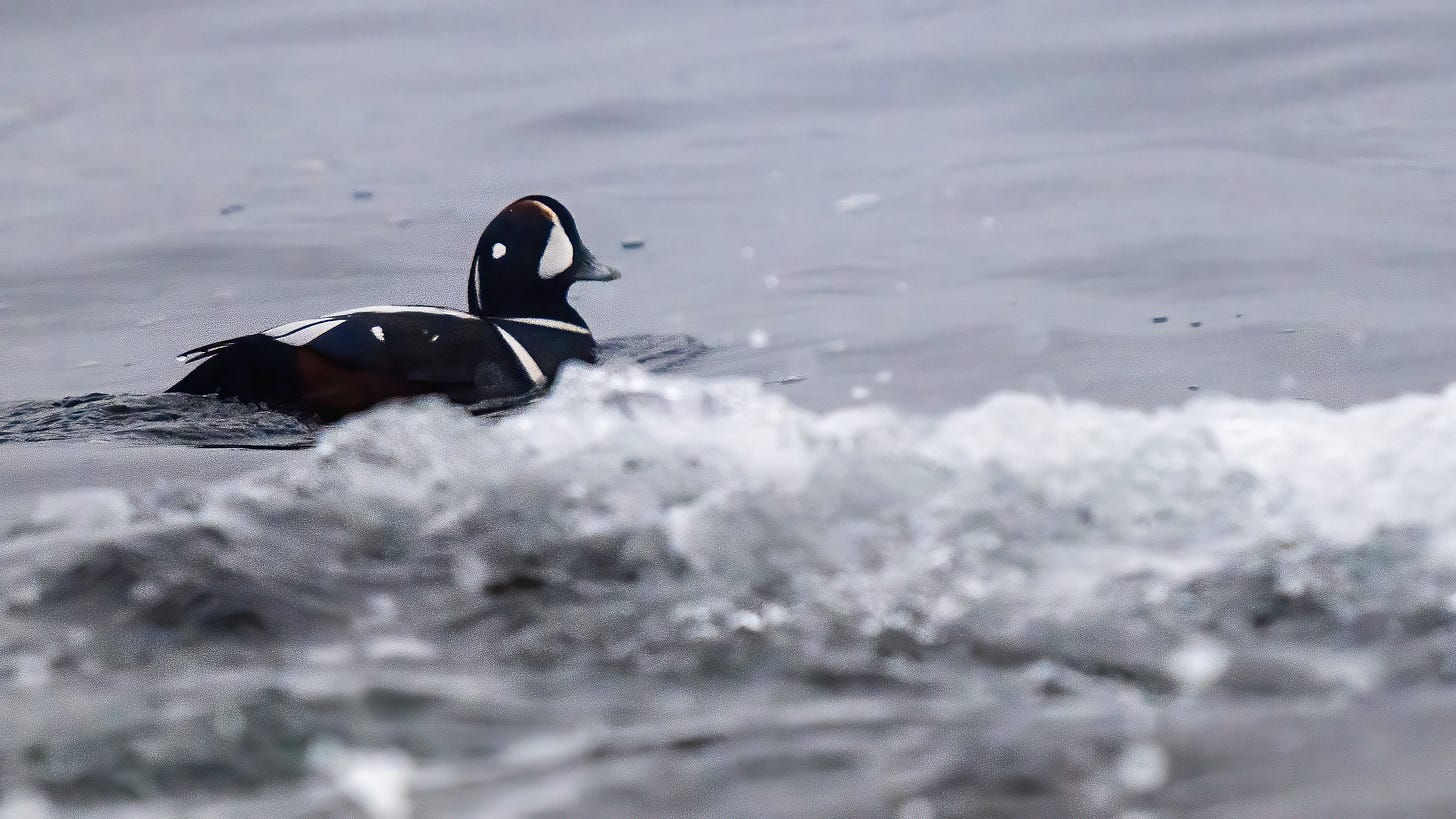
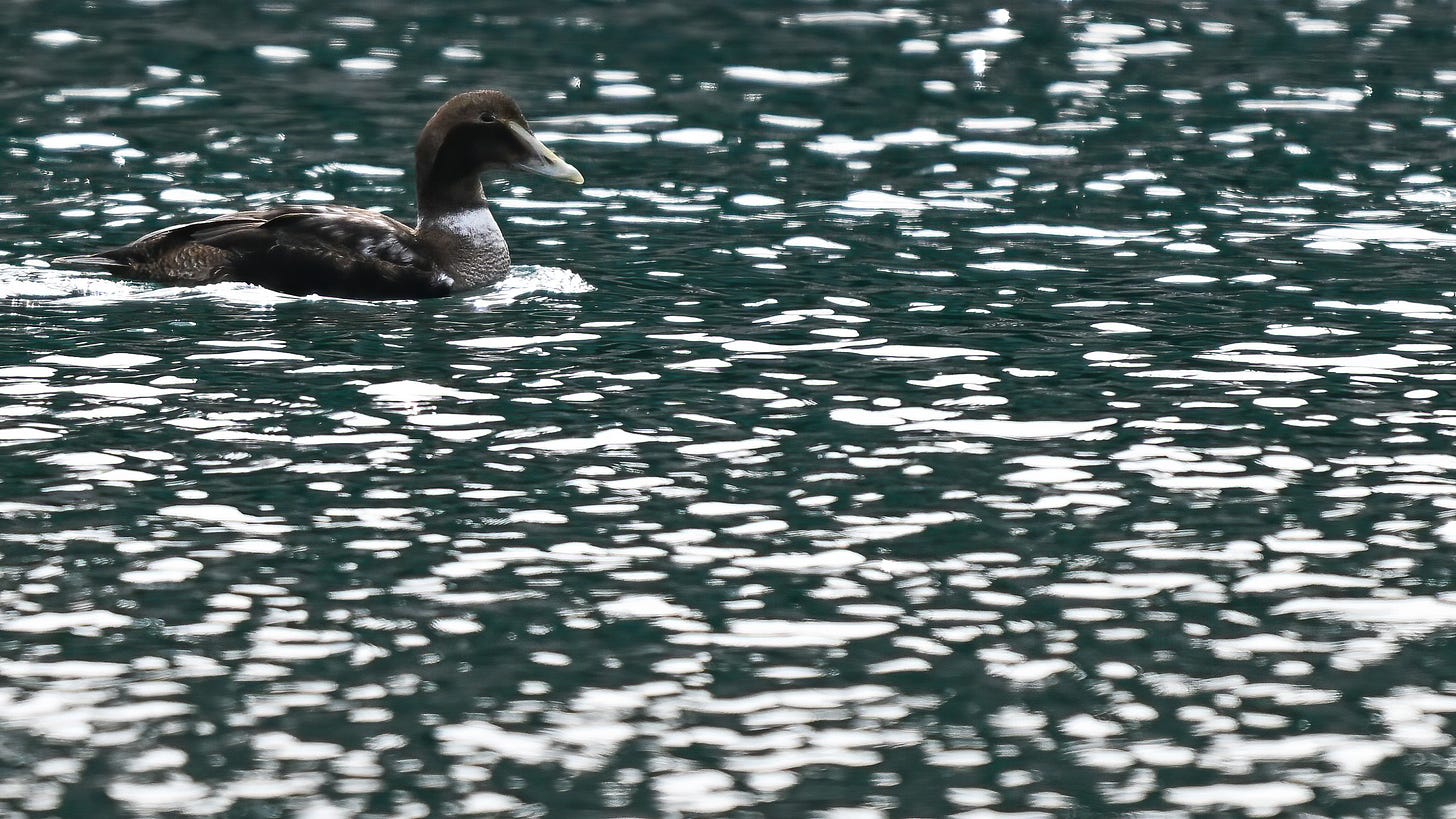
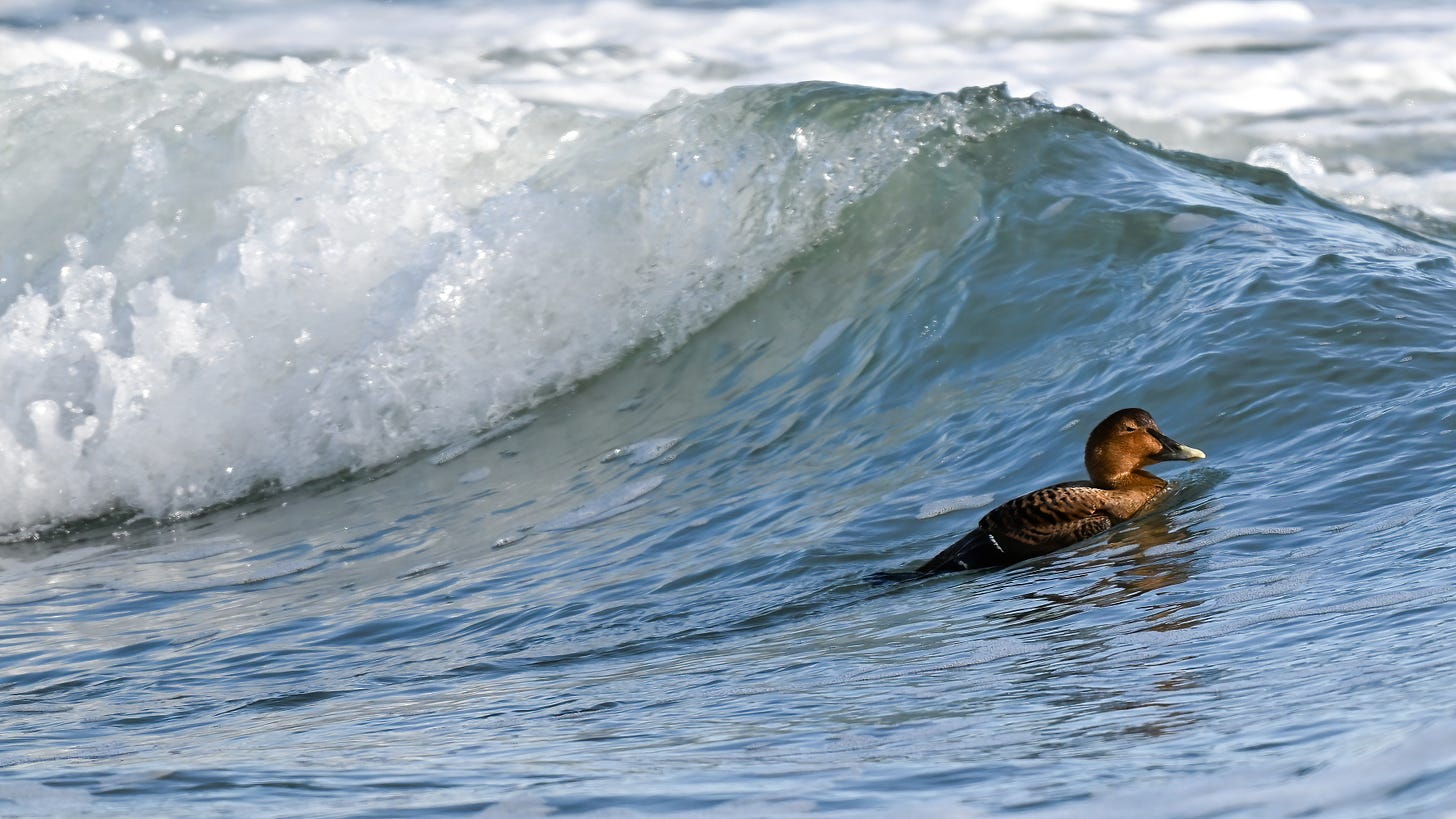
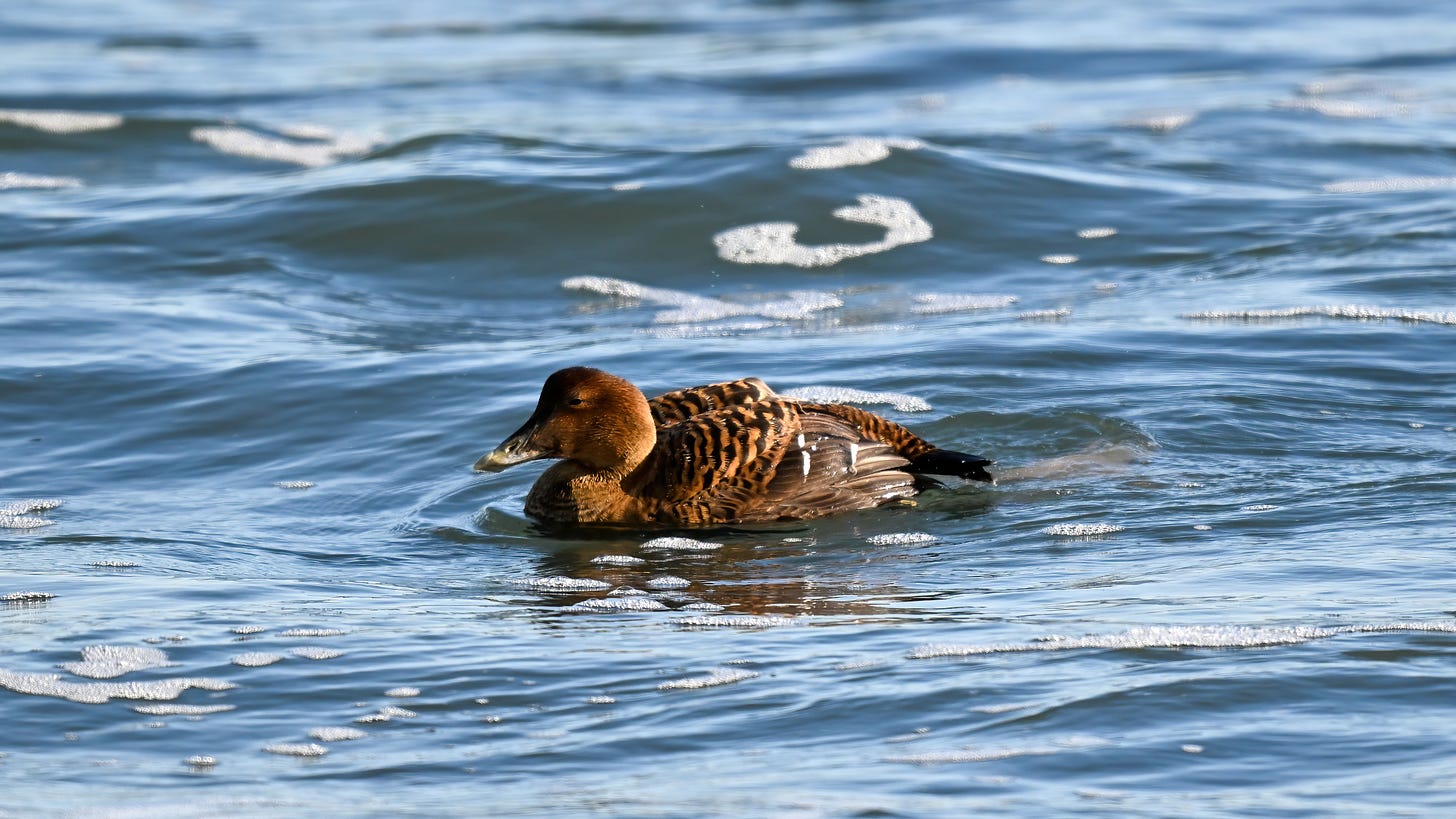



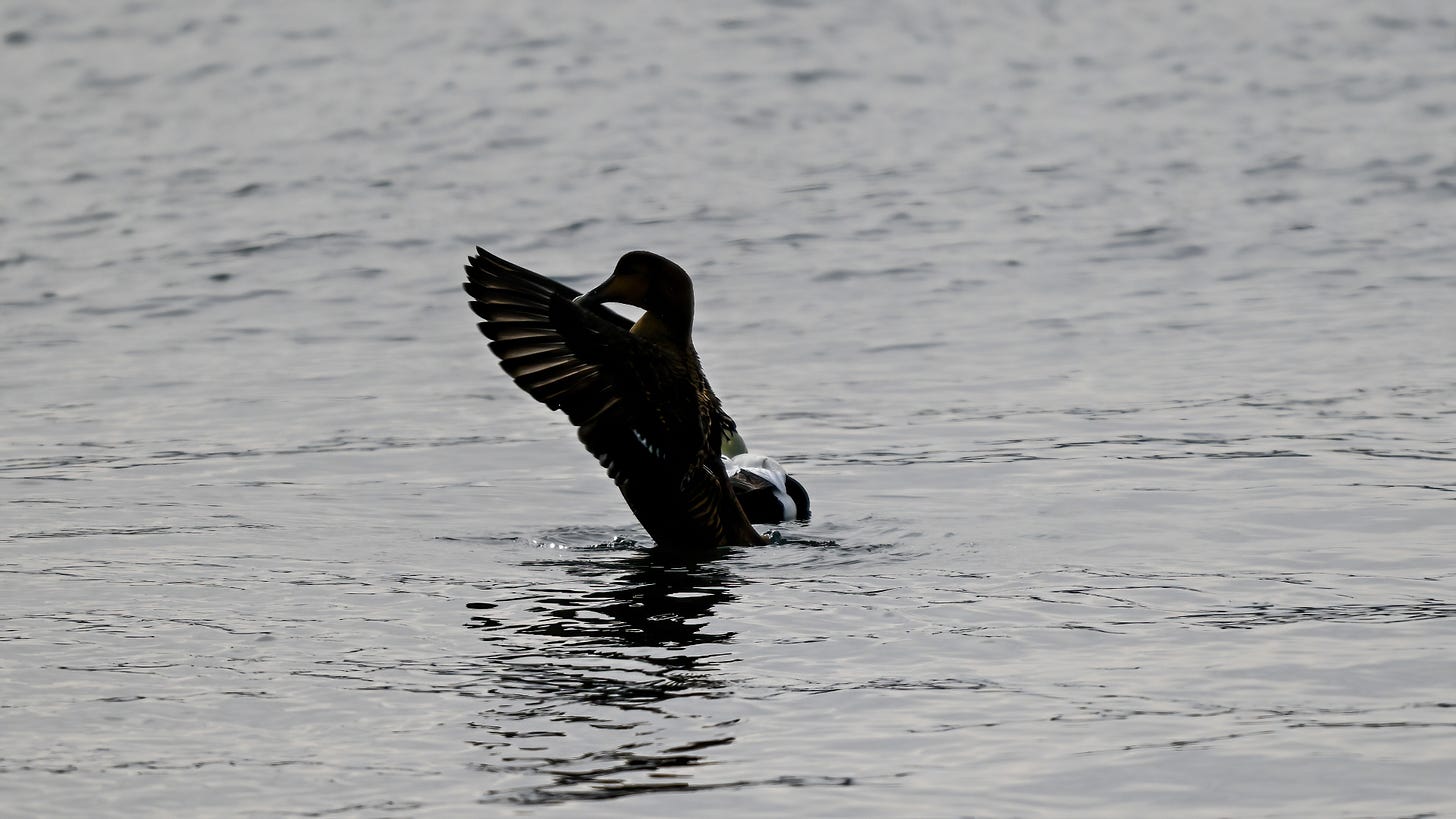
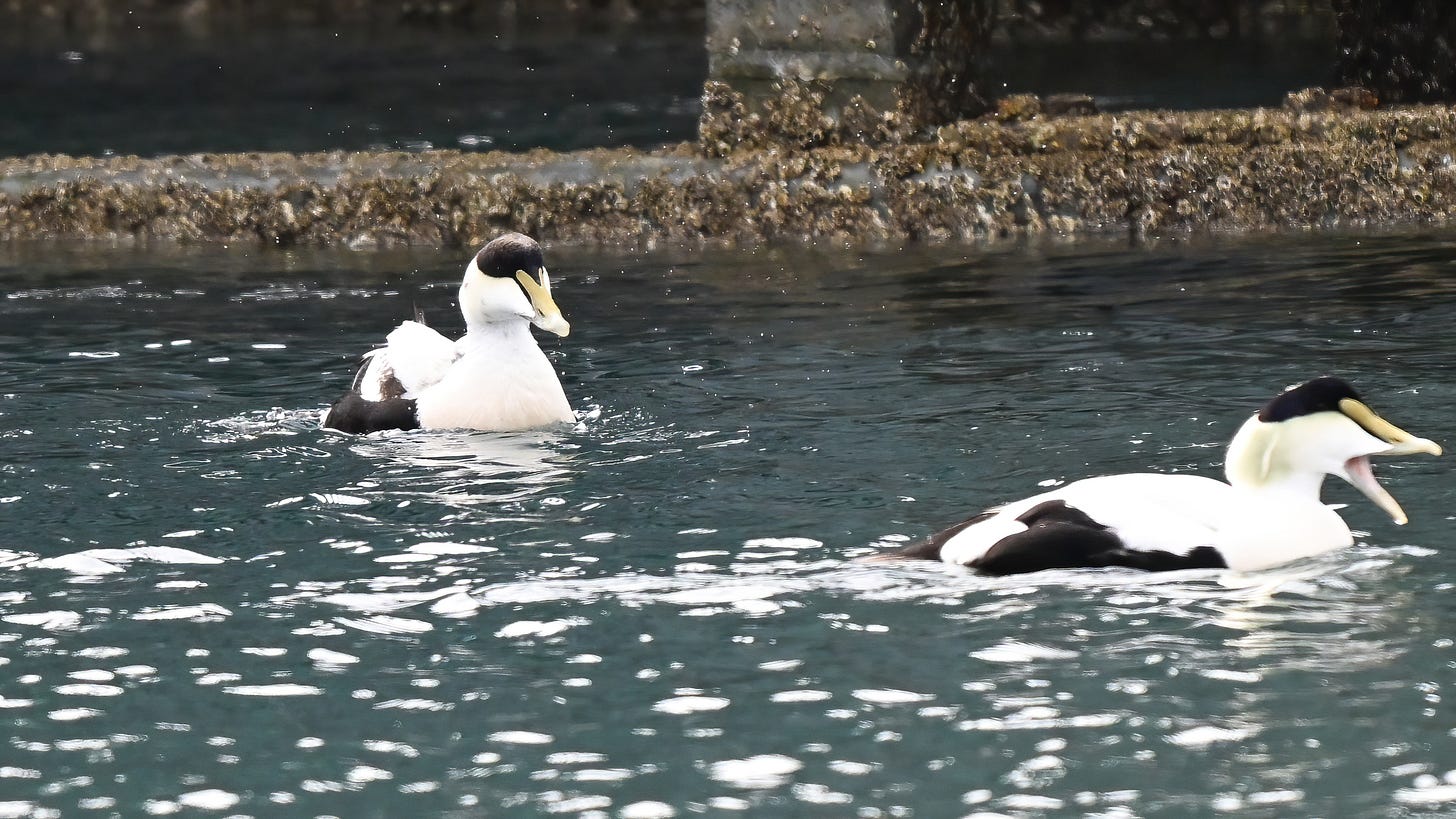
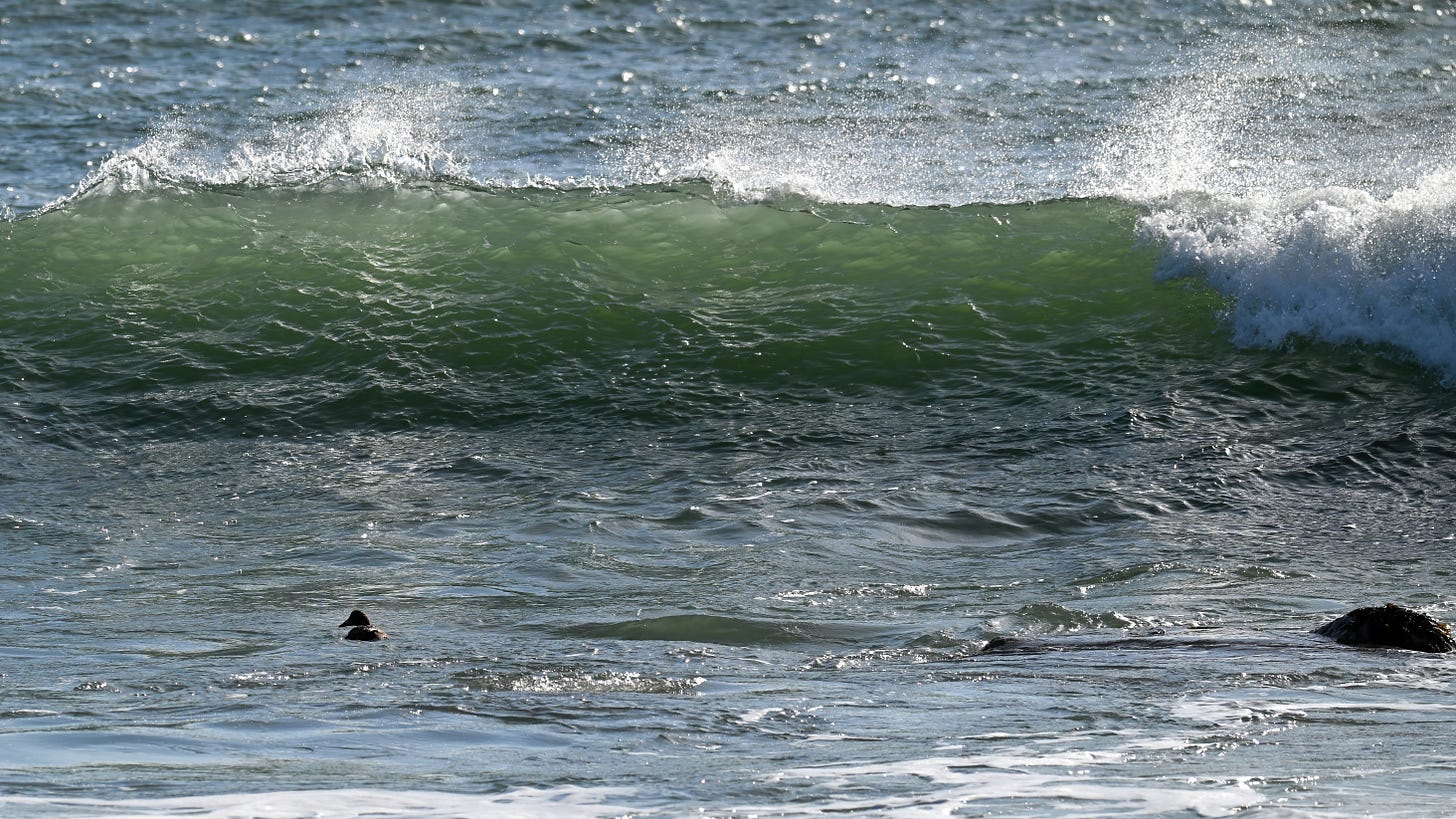


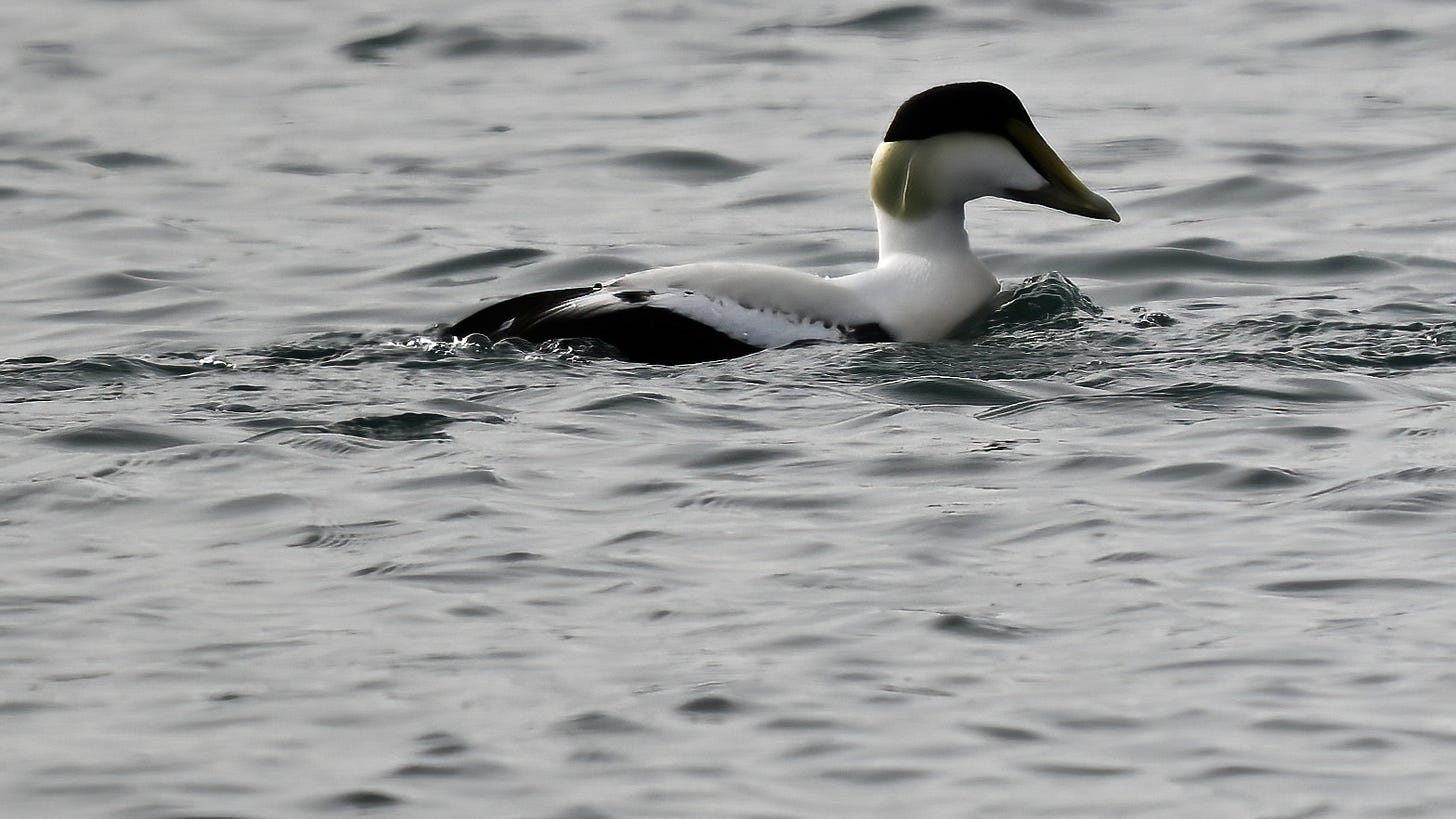






Someone asked me today..."name one thing that helps your mental health". I didn't pause for a moment. My answer... "DUCKS".
I've only once seen a common eider, and I didn't even realise it until i edited the photo. It was a female sleeping in the middle of a Belgian beach. With it being totally brown, and my brain desensitised to urban ducks, as they are almost always Mallards here, I couldn't tell. I wish I was more excited then!